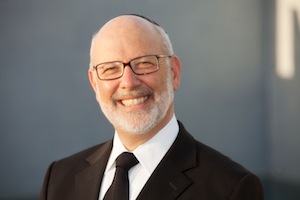Ash and Dust – Sota and Para
Travel with me on an imaginary trip forward (or backward) into a time when the Beit Hamikdash is operational.
We stroll and we observe. We see two strange, seemingly unrelated practices. First, we see a Kohein fixing a drink. The scene is sad. Conflict, fear and resentment permeate the atmosphere. He is mixing sand and water for the Mey Sota (Waters of a Sota). A man requested that his wife avoid ongoing privacy with another man. After ignoring his request, he accuses her of unfaithfulness. Drinking this water will prove her either guilty or innocent. If innocent, cleansed of the negative energy between them, the couple will reconcile in peace and joy. Later, a righteous son of Abrahamic stature will be born.
In a different place a Kohein is mixing another inert powder, the ashes of a Para Aduma (Red Cow), with water, the source of life. This mixture also cleanses negative energy; the negative energy that attaches to a Jew when he has contact with a dead body. This mixture however will not be drunk; it will be sprinkled.
The intersection of Masechet Sotah in the current Daf Yomi program with Parshat Parah in this week's Parsha, begs a comparison that the Gemmara (Sotah 17a) provides: "Rava researched[1] and discovered that as a consequence of Avraham's humble declaration ‘and I am merely dust and ashes,' his children were privileged with two mitzvot: the ashes of the Red Cow and the dust of the Sotah (water)."
The Yeast in the Dough
Ash and dust are also correlated in the laws of chameitz (food containing unleavened bread or yeast). Before Pesach we must destroy any chameitz we own. This destruction, according to R. Yehuda[2] requires the reduction of chameitz to ashes. But when we perform the act of bittul chameitz (canceling our attachment tochameitz), we use the phrase "let it be (to me) like the dust of the earth."
Chameitz is often referred to as se'or she'ba'issa (the yeast in the dough). This means it represents the ego, which bloats the personality. Destruction of ego, the primary practice of Pesach, has two forms: it can be reduced to ashes by means of burning or to dust by means of grinding. Ash is sterile, unable to produce any life at all whereas dust nurtures vegetation and supports life. There are times when ego needs to be rendered as sterile as ash, and other times when it has a use and gives rise to life.[3]
Can't live with it; can't live without it
Ego needs to be kept in check at all times; but in our general activities, some degree of ego is necessary. "Were it not for theYeitzer Hara (ego), men would not build homes nor marry women!"[4] Not so in the study of Torah. In the study of Torah there is no place for ego at all. Even the tiniest amount of ego is devastatingly destructive to the study of Torah[5] (like tiny quantities of chameitzon Pesach).
Part of the practice of Torah study, is the "burning" of our ego as we burn the chameitz. We burn it with the heat of our creative passion in the ecstasy of our learning, where being true is more important than being right. In our general activities we learn to crush our egos too. In business we submit ourselves to the needs of our customers or work for the wellbeing of our employers. When we love, we do so selflessly and unconditionally. Yet in both business and love there is a dimension of conquest for a man that is entirely absent from Limud Torah. Conquest is a function of ego. Ego, after it has been crushed into dust, still plays a part in business and in love. From dust's virtual inertia, life, success and love grow and flourish.
Moral Heroism: Hakoveish et Yitzro
Avraham demonstrated the elimination of his ego in both senses: he was both dust and ashes. His ego was entirely inert with respect to his service of G-d, but in his relationships and business activities he was able to use his ego to produce life. And this translated into these two mitzvot generations later.
In the case of Sota, out of the dust of an almost broken marriage, after both the husband and his wife's egos have been crushed but not destroyed, love and life blossom. But Para Aduma teaches us the principles of Torah learning: This is the "Chukat Hatorah[6]";and "this is the Torah- A man who dies in a tent[7]" or as Chazal read it "a man who kills his ego in the tent of Torah study". In the study of Torah ego is to be utterly sterilized, it must be burnt into ash.
It would be so much easier if like the religions of Asia, we merely had to kill our egos entirely, or like Western materialists we were free to live by our egos. But neither is what the Torah demands of us. The Torah challenges us to become artful in the juggle of the ego. Burning it into nothingness in some areas and crushing it into dust that can still produce, in other areas. We are not to bluntly destroy our egos but to conquer them, able to apply our egos where they are needed, and silence them where they are not. Who is a hero? One who has conquered his ego, hakoveish et yitzro.[8]
Notes:








